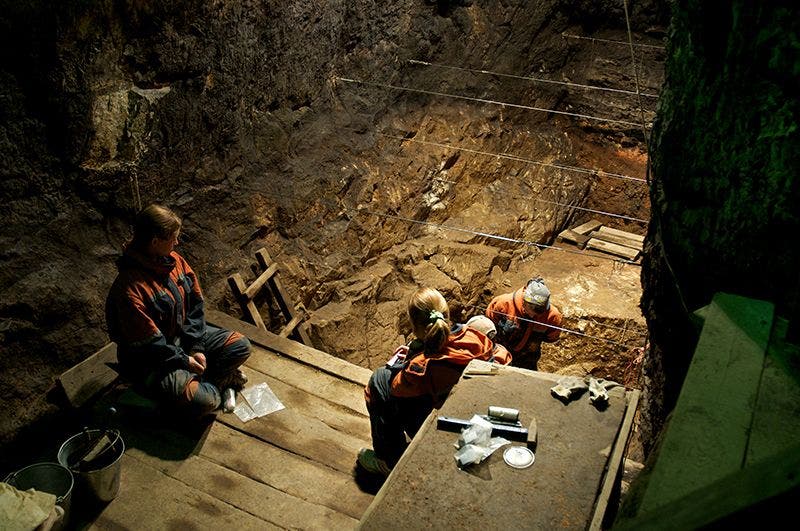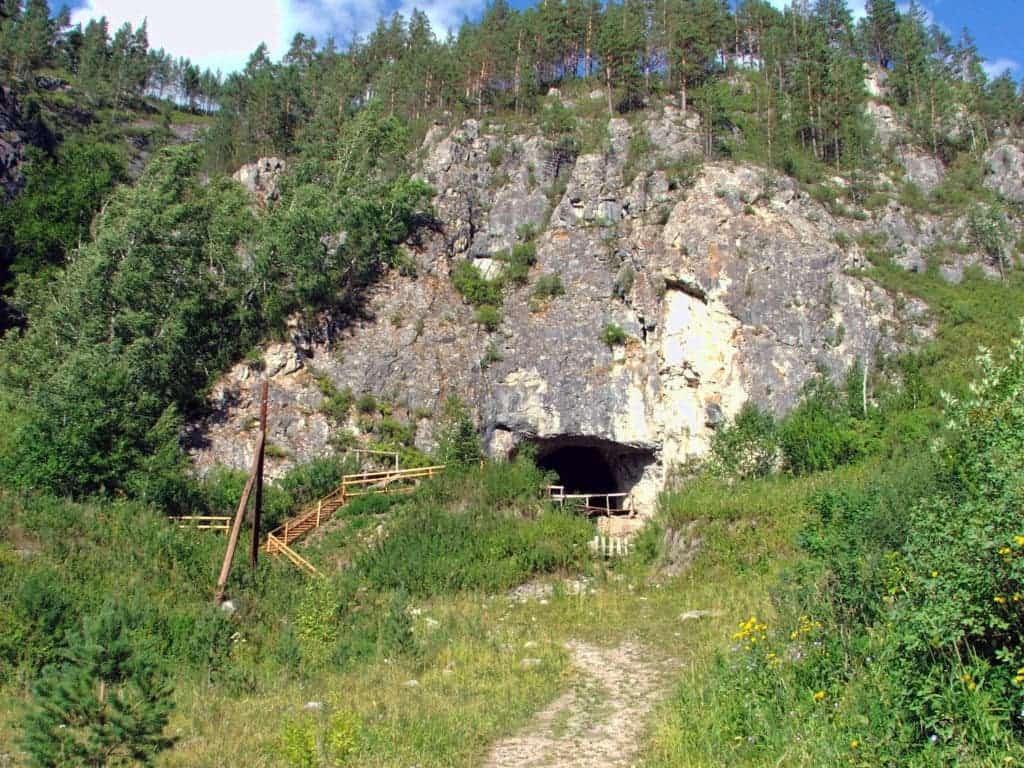Ancient human species interbred, new evidence suggests.

Digging in and analyzing in the Denisova Cave. Image credits: Bence Viola/Max Planck Institute for Evolutionary Anthropology.
A rather small and inconspicuous cave in the Altai mountains, Siberia, has revolutionized our understanding of ancient humans. The Denisova cave has yielded some of the most fascinating ancient artifacts and remains, including a new species of hominins — the Denisovans, named so after the cave itself.
The Denisovans were distinct but related to the Neanderthals. Since Neanderthal remains were also found in the cave, this led to speculation that the two groups were living and breeding together, but there was no direct proof — until now.
In a new study, a team of anthropologists describe a small piece of bone belonging to a child whose mother was a Neanderthal and father was a Denisovan. Not only is this an extremely important piece of evidence, but it’s also very unexpected — a needle in a haystack, anthropologically speaking.
“To find a first-generation person of mixed ancestry from these groups is absolutely extraordinary,” says population geneticist Pontus Skoglund at the Francis Crick Institute in London. “It’s really great science coupled with a little bit of luck.”
The new study was led by Viviane Slon and Svante Pääbo of the Max Planck Institute for Evolutionary Anthropology in Leipzig, Germany. Along with their colleagues, they carried out a genetic analysis of the piece of bone, finding that 40% of DNA fragments from the specimen matched Neanderthal DNA, while another 40% matched Denisovan DNA. When they sequenced the sample’s mitochondrial DNA, they found that it comes from the Neanderthal lineage. Since mitochondrial DNA is only inherited from the mother, it means that the mother was Neanderthal, which means that the father was a Denisovan.
But there is another possibility: what if both parents were hybrids themselves?
To figure out which of the two options were more likely, researchers looked at which sections matched which type of DNA. Again, the results aligned surprisingly well, clearly indicating that Denny — as the ancient human was unofficially named — was the direct offspring of two distinct humans, not hybrids. Denny is a first-generation hybrid, and the results, Skoglund told Nature, need to go directly into the history books.
It’s not clear how common interbreeding was, but it seems plausible that both Neanderthals and Denisovans would have jumped at the possibility of breeding with each other. So why haven’t we found more evidence for it, then?
There are a few reasons, starting with the fact that they come from different geographical ranges. In other words, Denisovans and Neanderthals might have simply not met all that often. Also, there’s a chance that hybrids wouldn’t have been fertile, preventing the two groups from truly merging.
Until some 40,000 years ago, Europe was home to both groups. The more well-known Neanderthals were more present in the West, while the elusive Denisovans retreated to the East.
The study was published in Nature.










